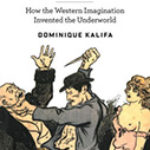A Thousand Thirsty Beaches: Smuggling Alcohol From Cuba To The South During Prohibition

Author: Lisa Lindquist Dorr
Publisher: Chapel Hill, NC: University of North Carolina Press, 2018. 312p.
Reviewer: Andrae Marak | March 2020
Historical and political studies of alcohol, drugs, and smuggling have risen in prominence over the last decade. A single row on my own bookshelves has recent books (in no particular order) by Richard Friman, Katherine Unterman, Isaac Campos, Howard Campbell, Alan Karras, Elaine Carey, Michael Kenney, Peter Andreas, Tom Wainright, Holly Karibo, Sam Quinones, Dawn Paley, and George Díaz. This collection only scratches the surface. Although Lisa Linquist Dorr’s A Thousand Thirsty Beaches falls victim to some of the regular shortcomings of this literature, it is a well written, welcome, and necessary addition to this growing field. This is especially the case because it covers the smuggling into the, up until recently, understudied US South.
Linquist Dorr’s introduction situates her work on Prohibition and smuggling as a battle between government officials and smugglers, acknowledging that government officials were often coopted or became part of smuggling rings, and that the smugglers often had high levels of public support. The author rightly notes that prohibition regimes – of alcohol, drugs, and particular peoples – create (often lucrative) black markets and that the federal government’s attempts to fight smuggling greatly increased federal resources and power and more closely tied the Southern economy to that of the North (and to the rest of the world through the Caribbean). This book examines the federal government’s efforts to combat alcohol production and smuggling in the South, focusing specifically on its efforts to counter smuggling from Cuba. This focus is important because many European alcohol producers did not want to lose their US markets, so they shifted their exports to Cuba, where the transshipment of alcohol was not illegal. Linquist Dorr uses a wide range of US governmental archival sources to track the sometimes successful (though almost always temporarily so) attempts by US agents to counter the use of Havana as a transshipment point. Her examination, however, is particularly one-sided as it is based almost entirely on official sources produced by U.S. government agents and agencies. Cuban sources and Spanish language source are almost non-existent. Furthermore, the use of governmental sources often results, early on in the book, in the adoption of the US government’s policy position as the lens through which readers come to understand the failure of prohibition. For example, Linquist Dorr argues that “[t]here was no shortage of eager, slightly shady entrepreneurs willing to take advantage of the underserved market for liquor consumers in the United States” (25). The claim that entrepreneurs that engaged in the smuggling of alcohol had to be at least “slightly shady” ignores the difference between what is legal/illegal and what is licit/illicit. Smugglers were clearly breaking the law, but they – and the people who were buying alcohol from them – may not have viewed themselves as doing anything wrong. In which case, it totally depends on whose point of view we are approaching this from as to whether or not smugglers were “slightly shady.” Also, this ignores the fact that, like today, most smuggling of illegal goods was intermixed with the transportation and marketing of legal goods. Linquist Dorr understands this, but readers won’t know this until after she is done providing the context and ably begins, much later in the book, exploring the gendered and racial dynamics of Prohibition and smuggling in the South.
In her exploration of the US response to smuggling, Linquist Dorr illuminates the ways in which the newly created US Coast Guard shifted from mostly ignoring smuggling to adopting creative interpretations of international law (along with increases in federal resources) to expand its reach beyond the three mile limits generally accepted by most nations, making it more difficult for smugglers to simply hover just outside of the limits as they awaited the right time to offload their cargoes. She also explores the ways in which Prohibition expanded the federal government’s presence in the South even as the smuggling and marketing of alcohol served to more closely tie the South’s economy to that of the North. That said, the expansion of the federal government’s presence in the South did not necessarily mean an increased ability to interdict illegal alcohol, as a good number of government agents as well as members of the public did not support Prohibition or, even if they were in favor of Prohibition, did not agree with the means of enforcing it or which people ought to be forced to comply with it. Furthermore, intergovernmental cooperation and cross-departmental coordination were often lacking. Of course, the Coast Guard’s lack of success in carrying out its Prohibition mission did not prevent it and its unsuccessful tactics from becoming a regular part of the law enforcement mix, as it shifted to combatting drugs and undocumented immigration in the coming century (in an often equally unsuccessful way).
The author’s most troublesome section of the book is her chapter on U.S. attempts to enforce Prohibition in Cuba. This chapter is built almost entirely on U.S. governmental and English language sources, and the chapter’s limitations in perspective reflect this. I don’t want to be too harsh here. Her chapter is entitled “Booze Cops in Cuba,” so it is clear that her focus is on U.S. enforcement, not on Cuban perspectives of that enforcement. She does a good job of providing a context for Cuba, noting that by 1926 the United States had signed anti-smuggling treaties with both Mexico and Canada aimed (unsuccessfully) at stemming the flow of alcohol into the United States. The U.S. used its unequal relationship with Cuba to try, lacking the resources or ability to do so themselves, to force the Cuban government to enforce U.S. Prohibition in Cuba. Cuba’s limited success, which lasted from 1926 to 1927, came at a great cost to its tax revenues. Linquist Dorr argues that Cuban officials, given the disparities in power between the U.S. and Cuba had little choice but to accede to U.S. wishes. But Cubans quickly found ways to work around these new obstacles. Although Cuba would never again openly flout U.S. Prohibition, perceptions can be deceiving. Like the current War on Drugs where Colombia is often viewed as a success story, the fact that much of the violence associated with the flow of drugs has shifted to Mexico and Central America does little to address the fact that just as much cocaine is moving through Colombia as when violence was at much higher levels two decades ago. How might we understand Cuba’s role in Prohibition through Spanish-language sources if we were better able to understand the ways in which Cubans created the appearance of compliance while still serving as a major gateway for alcohol into the United States?
I wonder if the material in Linquist Dorr’s fourth chapter might better have been woven into other chapters and described the complications presented to the job that multiple agencies had in combatting a range of “illegal” peoples and goods entering the United States. Clearly, the prohibition regimes against alcohol, immigrants, and narcotics were all closely tied together as they were, in part, responses to the perceived practices of unwanted “others.” And the plethora of government agencies created (and expanded) to respond to these issues is a major part of the story of the increased capacity of the federal government in the South as well as the ways in which these agencies more closely tied the South to the North. That said, I wonder if the separation of interdicting immigrant and narcotics smugglers from alcohol smugglers (even though the actual smugglers were often one and the same) was a product of the archives from which the author worked. Or, perhaps, it is the fact that the book’s title and subtitle do not even hint at this chapter’s contents, that makes it stand out so much. That said, her major takeaway, that the institutions created to battle against a range of prohibited goods and people would, in spite of the failure of Prohibition, gain more power and resources over time until their authority was able to deeply penetrate not only the United States but the sovereignty of other countries as well, is made clear.
Linquist Dorr is at her best when she explores the racial and gendered implications of Prohibition in the South. She notes that the South, because it was highly evangelical, had a reputation for being teetotaling, but the truth was that many people, especially men, abstained from imbibing particular forms of alcohol, usually hard liquor, in particular settings such as in the home or in mixed company. Moreover, Southern whites often believed that Prohibition would help keep alcohol out of the hands of people who couldn’t handle alcohol — namely, African- Americans. African- Americans, on the other hand, often supported Prohibition as a form of social and racial uplift. Because Florida, and especially Miami, was a major center of alcohol smuggling, it served as both a central point of distribution for alcohol destined for the North and as a place for tourists to come and enjoy alcohol while they took in some sun. Of course, the unevenness of Prohibition enforcement meant that some people, especially African- Americans and the poor, faced the brunt of the law while others skated free or received only a slap on the wrist. In addition, the capture of political office, especially the sheriff’s position could be highly lucrative, allowing one political faction to co-opt local smuggling operations or enforce Prohibition only on their political enemies. Like Elaine Carey’s work on female drug kingpins, Linquist Dorr explores the ways that assumptions of African- American inferiority by Whites made it more possible for enterprising African-Americans to run alcohol smuggling rings. This is a truly exciting addition to the literature, and I hope that she and others return to this issue to explore, as she does in part, the ways in which this resulted in cross-race alliances that undermined many of the very reasons that White Southern elites supported Prohibition in the first place.
In the end, Lisa Linquist Dorr’s book is a wonderful addition to the literature on Prohibition. Her counterintuitive findings on the ways in which Prohibition impacted not just how much people drank but the places and ways in which they drank, as well as the impact that Prohibition had on the poor (by providing them with new ways to make money) are worthy of further exploration. Her work on Cuba and the ways in which the U.S. attempted to force Cuban officials to enforce Prohibition are also a welcome addition to the literature on the ways in which the U.S. has increasingly tried to extend its jurisdiction and power into the sovereign spaces of other nations. A future exploration of Spanish language sources will only further add to our understanding of this particular case.
Andrae Marak, Professor of History and Political Science Dean of the College of Arts and Sciences & Graduate Studies


